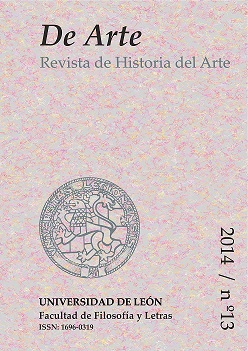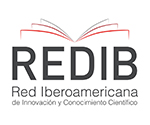La formulación del estilo mudéjar en el siglo del Romanticismo: una propuesta de estudio desde la literatura de viajes
DOI:
https://doi.org/10.18002/da.v0i13.986Palabras clave:
Mudéjar. Estilo. Estética. Arte medieval. Literatura de viajesResumen
En 1859, José Amador de los Ríos pronunció su discurso de entrada a la Real Academia de Bellas Artes de San Fernando con el título "El estilo mudéjar en arquitectura". Bajo esta denominación se iban a incluir sencillas construcciones repartidas por todo el territorio español que participaban de las características propias de las corrientes artísticas cristianas y, a su vez, se veían influenciadas por el arte islámico desarrollado en Al-Andalus entre el 711 y 1492. Se iniciaba así uno de los debates historiográficos más polémicos de la Historia del Arte. Para algunos estudiosos el mudéjar se mostraba como un nuevo estilo representativo del arte español. En contra, otros especialistas consideraron que los edificios catalogados bajo la denominación de Amador de los Ríos no perdían la esencia del arte de su tiempo, llegando a defender que el "estilo mudéjar" no era más que un marcador de identidad nacional propio del siglo XIX. En este sentido, el trabajo que se desarrolla en las líneas siguientes presenta una reflexión en torno a este debate y la legitimidad de usar el término acuñado por de los Ríos como categoría estilística. Para ello me serviré de las descripciones realizadas por los viajeros extranjeros de los edificios toledanos colocados al amparo del estilo mudéjar, con 1859 como año que marcó un antes y un después.Descargas
Métricas alternativas
Descargas
Publicado
Número
Sección
Licencia
Derechos de autor 2015 De Arte. Revista de Historia del Arte

Esta obra está bajo una licencia internacional Creative Commons Atribución-NoComercial-CompartirIgual 4.0.
Los autores que publican en esta revista están de acuerdo con los siguientes términos:
- Los autores ceden de forma no exclusiva los derechos de explotación (reproducción, distribución, comunicación pública, transformación) a la Universidad de León, por lo que pueden establecer, por separado, acuerdos adicionales para la distribución no exclusiva de la versión de la obra publicada en la revista (por ejemplo, alojarlo en un repositorio institucional o publicarlo en un libro), con un reconocimiento de su publicación inicial en esta revista.
- Este trabajo se encuentra bajo la Creative Commons Attribution-NonCommercial-ShareAlike 4.0 International License. Puede consultarse desde aquí la versión informativa y el texto legal de la licencia.
- Se permite y se anima a los autores a difundir electrónicamente las versiones pre-print (versión antes de ser evaluada) y/o post-print (versión evaluada y aceptada para su publicación) de sus obras antes de su publicación, ya que favorece su circulación y difusión más temprana y con ello un posible aumento en su citación y alcance entre la comunidad académica.









